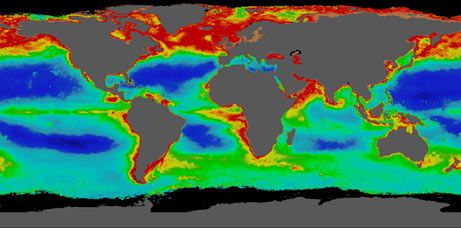Disease, Warming Oceans Rock Lobster and Sea Star Populations
Published on by Ashantha Goonetilleke, Professor, Water/Environmental Engineering at Queensland University of Technology in Academic
Two new Cornell University studies show how diverse marine organisms are susceptible to diseases made worse by warming oceans.
The first study warns that warm sea temperatures in 2015 may increase the levels of epizootic shell disease in American lobster in the northern Gulf of Maine in 2016. The second provides the first evidence linking warmer ocean temperatures with a West Coast epidemic of sea star wasting disease that has infected more than 20 species and devastated populations since 2013. Both were published Feb. 15 as part of a marine disease-themed special issue of the journal Philosophical Transactions of the Royal Society B .
The first paper, “Improving marine disease surveillance through sea temperature monitoring, outlooks and projections,” summarizes the cases where there are known links between disease outbreaks and temperature, including diseases that affect corals, turtles, lobsters, bivalves, starfish and eelgrasses. The paper proposes best practices to develop models that link disease risk with temperature. Increased disease threatens a diverse range of marine populations, including economically important species like the Maine lobster which could put at risk the New England fishing industry.
“We can say when these organisms are going to be at risk of disease outbreaks based on temperature projections,” said Drew Harvell, Cornell professor of ecology and evolutionary biology and a co-author of the study. Jeffrey Maynard, formerly a postdoctoral associate in Harvell’s lab, is co-first author along with Ruben van Hooidonk, an assistant scientist with the National Oceanic and Atmospheric Administration (NOAA) and Jeff Shields, professor of marine science at the Virginia Institute of Marine Science.
“Shell disease has devastated the southern New England lobster fishery, and now with warming, it’s created a situation where the Maine lobster industry may be at risk,” said Shields. “Scientists are working with us to look out for increased lobster shell disease levels this spring.”
“Advanced warning of the right conditions for disease allows marine managers to increase surveillance and implement preventive strategies, such as reducing pollution, boat traffic and transmission dangers,” Harvell said.
The second paper, “Ochre star mortality during the 2014 wasting disease epizootic: role of population size structure and temperature,” focused on ochre stars, the most abundant sea star species along the West Coast. The study showed that warmer ocean temperatures led to higher risk of infection from sea star wasting disease, an affliction that wiped out 90 percent of some populations from Mexico to Alaska between 2013 and 2014. Adult populations fell to one-quarter of pre-outbreak numbers in the San Juan Islands, Washington.
“The outbreak occurred during a period of anomalously warm sea water and stars in the San Juan Islands had a higher disease risk at warmer sites,” said Harvell, a senior author of the study.
In lab experiments, sea stars died faster from the wasting disease at warmer temperatures than infected stars in cooler water.
Attached link
http://environmentalresearchweb.org/cws/article/yournews/64151Taxonomy
- Environment
- Climate Change